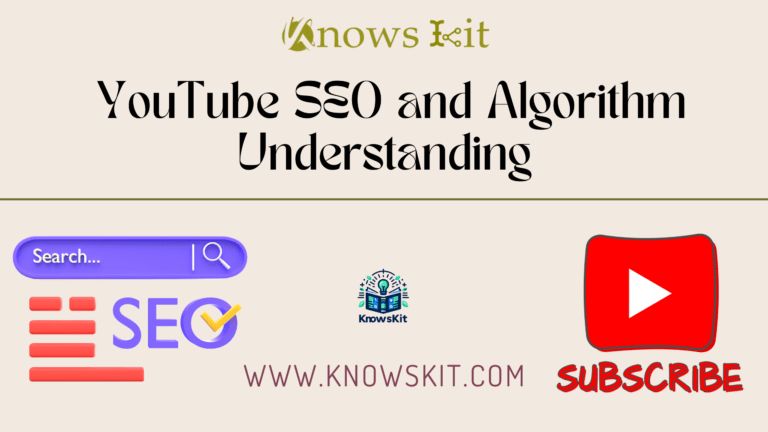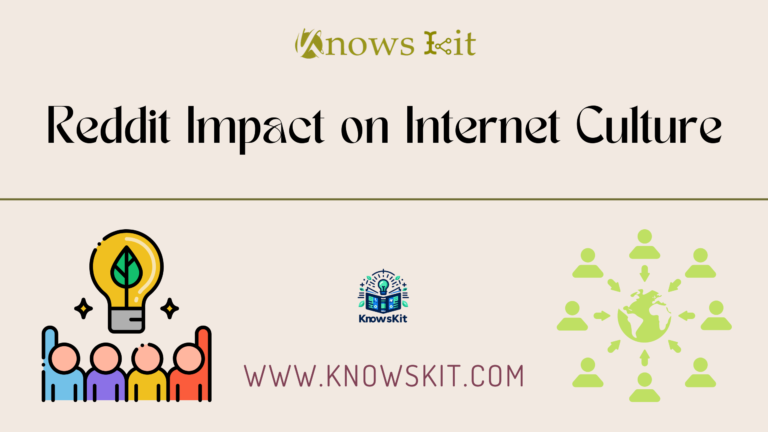In today’s digital epoch, Социальные сети stands as a colossal force, shaping not just our daily interactions but also the very fabric of society. From its humble beginnings to its current status as a global juggernaut, social media has evolved to become an integral part of our lives. This guide delves deep into the world of social media, offering insights and strategies for effectively harnessing its power. Whether you’re a social media novice or a savvy user, this guide is tailored to enrich your understanding and enhance your digital presence.
Understanding Social Media
What is Social Media?
Social media is more than just a digital platform; it’s a dynamic and interactive space where individuals and communities share, discuss, and modify user-generated content. It encompasses a broad range of online applications and sites, each designed to foster social interaction and content sharing. From Facebook and Twitter to Instagram and TikTok, each platform has its unique flavor and audience.
Social media has revolutionized the way we connect, share, and communicate. It encompasses a diverse array of online platforms and apps where users create, share, and interact with content. From text posts and photos to videos and live streams, social media enables a multi-faceted exchange of ideas and information. Its impact extends beyond personal use; it’s a powerful tool for businesses, governments, and non-profits to engage with their audience.
The Various Types of Social Media Platforms
![Social Media: Essential Strategies for Digital Success [2024 Exquisite Guide] 2 Diverse individuals engaging with different social media platforms.](https://www.knowskit.com/wp-content/uploads/2024/01/the-global-influence-of-social-media-1024x585.png)
The world of social media is vast and varied. Here, we categorize the platforms into several types:
- Networking Sites: These platforms, like Facebook and LinkedIn, focus on connecting users, be it for social or professional networking. They offer a space for sharing life updates, and professional achievements, and for fostering personal and professional relationships.
- Content Sharing Platforms: Instagram, YouTube, and TikTok fall under this category. These platforms are primarily visual and allow users to share photos, videos, and live content. They’re powerful tools for storytelling, brand building, and entertainment.
- Forums: Reddit and Quora are prime examples where users engage in discussions, share advice, and gather information. These platforms are built around communities and are ideal for in-depth discussions on a wide range of topics.
Key Statistics and Trends in Social Media
This part will delve into the latest statistics, such as the number of active users across different platforms, average time spent by users, and the growing impact of social media in various sectors like marketing, politics, and education. For instance, the fact that over 3.8 billion people use social media worldwide showcases its ubiquity. An infographic will visualize these statistics, making the data more accessible and engaging.
Using Social Media Effectively
![Social Media: Essential Strategies for Digital Success [2024 Exquisite Guide] 3 Case study breakdown of a successful social media campaign.](https://www.knowskit.com/wp-content/uploads/2024/01/anatomy-of-a-successful-social-media-campaign-1024x585.png)
Creating a Strong Social Media Presence
In today’s digital age, having a strong social media presence is crucial. This section will guide readers on building an authentic and engaging online identity. Key elements include understanding your audience, crafting a consistent brand voice, and being active and responsive. Regular posting, coupled with high-quality, relevant content, is essential. The section will also emphasize the importance of engaging with your audience through comments, messages, and community engagement to build a loyal following.
Best Practices for Engaging Content
Engaging content is the cornerstone of success on social media. This subsection will offer insights into creating content that resonates with audiences. Tips include:
- Visual Storytelling: Using compelling imagery or video content to tell stories that captivate followers.
- Interactive Content: Implementing polls, quizzes, and contests to encourage audience participation.
- Value-Driven Posts: Providing informative, educational, or entertaining content that adds value to the audience’s social media experience.
- Emotional Connection: Crafting posts that connect on an emotional level, whether it be humor, inspiration, or empathy.
The Power of Hashtags and Keywords
Understanding and utilizing hashtags and keywords effectively can significantly enhance a post’s visibility on social media. This part of the article will explain how to research and select appropriate hashtags and keywords (including variations of “Social Media”) for different platforms. It will also cover best practices for incorporating them naturally into posts without appearing forced or spammy.
Social Media Marketing
![Social Media: Essential Strategies for Digital Success [2024 Exquisite Guide] 4 Infographic of social media usage statistics and trends.](https://www.knowskit.com/wp-content/uploads/2024/01/social-media-by-the-numbers-1024x585.png)
Introduction to Social Media Marketing
Social media marketing (SMM) is an essential tool for businesses and individuals seeking to increase their online presence and reach their target audience. This subsection will introduce the basics of SMM, explaining how it differs from traditional marketing and highlighting its unique benefits, such as targeted reach, cost-effectiveness, and real-time feedback. It will also touch upon the importance of aligning SMM strategies with overall business goals to achieve tangible results.
Strategies for Effective Social Media Marketing
Effective SMM requires a strategic approach tailored to each platform’s unique audience and features. This part of the article will cover key strategies, including:
- Targeted Advertising: Utilizing social media’s extensive targeting options to reach specific demographics, interests, and behaviors.
- Influencer Collaborations: Partnering with influencers to tap into their established audiences and gain credibility.
- Content Diversity: Employing a mix of content types, such as videos, blogs, and infographics, to engage different segments of the audience.
- Community Building: Fostering a sense of community through regular engagement, user-generated content, and active participation in relevant social media groups.
Measuring Success in Social Media Marketing
It’s crucial to measure the effectiveness of SMM efforts to understand the return on investment (ROI). This subsection will discuss the key metrics to track, such as engagement rates, follower growth, website traffic from social media, and conversion rates. It will also explain how to use analytics tools to gather these insights and adjust strategies for improved performance.
Table: Comparison of Different Social Media Platforms for Marketing
| Social Media Platform | Target Audience | Content Strengths | Advertising Features | Best For |
|---|---|---|---|---|
| Broad demographic, with a significant presence of users aged 25-54 | Diverse content types including text, images, videos, and live streams | Advanced targeting options, robust analytics, diverse ad formats | Brand awareness, community building, lead generation | |
| Younger demographic, primarily millennials and Gen Z | High-quality visual content, including Stories, Reels, and IGTV | Influencer partnerships, shoppable posts, story ads | Brand storytelling, lifestyle marketing, product showcases | |
| Wide-ranging, but particularly popular among users aged 18-29 | Real-time content, brief text updates, trending topics | Promoted tweets, targeted advertising, event targeting | Real-time engagement, brand personality, customer service | |
| Professionals, business decision-makers | Professional content including articles, company updates, job postings | B2B targeting, sponsored content, InMail ads | B2B marketing, professional networking, thought leadership | |
| TikTok | Predominantly Gen Z but growing among other age groups | Short-form, creative video content | Hashtag challenges, branded effects, in-feed ads | Viral content, brand personality, reaching younger audiences |
| Majority female audience, DIY enthusiasts, and shoppers | Visual discovery, idea sharing, pins linking to external sites | Promoted pins, buyable pins, audience targeting | Brand inspiration, e-commerce, driving website traffic | |
| YouTube | Broad demographic, skewed slightly towards younger users | Long-form video content, vlogs, tutorials | Video ads, channel sponsorships, in-video overlays | Video marketing, tutorials, influencer collaborations |
Navigating Challenges in Social Media
![Social Media: Essential Strategies for Digital Success [2024 Exquisite Guide] 5 Symbolic representation of social media challenges](https://www.knowskit.com/wp-content/uploads/2024/01/overcoming-social-media-obstacles-1024x585.png)
Common Social Media Pitfalls and How to Avoid Them
Social media, while a powerful tool, comes with its own set of challenges. This section will address common pitfalls such as dealing with negative feedback, maintaining a consistent posting schedule, and managing public perception.
It will provide practical advice on how to professionally handle criticism, the importance of a content calendar for consistent engagement, and tips for maintaining a positive online reputation. Additionally, the article will cover privacy concerns and how to protect personal and business information from being compromised:
- Negative Feedback: Always respond professionally and constructively.
- Privacy Concerns: Be mindful of the information you share and respect user privacy.
Managing Your Digital Footprint
Your digital footprint – the record of your interactions and behaviors online – is permanent and can significantly impact personal and professional lives. This subsection will discuss the importance of being mindful of what you share on social media.
It will offer strategies for curating a digital presence that reflects positively on you or your brand, such as being thoughtful about the content you post and engage with, understanding privacy settings, and conducting regular audits of your social media accounts.
Legal and Ethical Considerations in Social Media
![Social Media: Essential Strategies for Digital Success [2024 Exquisite Guide] 6 Illustrations of various social media marketing tactics](https://www.knowskit.com/wp-content/uploads/2024/01/the-art-of-social-media-marketing-1024x585.png)
Social media is not just about what you should do, but also about what you legally and ethically can do. This part of the article will explore various legal and ethical considerations, including copyright laws, data privacy regulations (like GDPR), and community standards of different platforms. It will also touch on the importance of ethical practices like transparency, respecting audience privacy, and avoiding misinformation.
The Future of Social Media
Emerging Trends in Social Media
The landscape of social media is ever-evolving, with new trends emerging regularly. This subsection will explore the latest and potential future trends in social media. Topics might include the increasing use of augmented reality (AR) and virtual reality (VR) in creating more immersive social experiences, the role of artificial intelligence (AI) in personalizing user experiences, and the growing importance of privacy and data security in social platforms. We’ll also discuss the rise of ephemeral content, like stories, that disappear after a short period, and how it’s changing the way people share online.
The Role of Social Media in Future Communication
![Social Media: Essential Strategies for Digital Success [2024 Exquisite Guide] 7 Futuristic integration of AR, VR, and AI in social media](https://www.knowskit.com/wp-content/uploads/2024/01/social-media-of-the-future-1024x585.png)
Social media’s role in communication is set to grow even more significant. This part of the article will delve into how social media is expected to further break down communication barriers, facilitate more global connections, and continue to be a crucial tool in various sectors including education, politics, and business. The subsection will also explore the idea of social media platforms as news sources and how they are increasingly being used for public service announcements and crisis communication.
Preparing for the Future of Social Media
To stay ahead in the rapidly changing world of social media, individuals and businesses must be adaptable and forward-thinking. This final subsection will offer tips on staying informed about emerging trends, adapting strategies to align with these changes and the importance of continuous learning in the digital age. It will stress the need for agility in content creation and platform usage, and the importance of ethical and responsible social media practices in the future.
ЧАСТО ЗАДАВАЕМЫЕ ВОПРОСЫ
How can I protect my privacy on social media?
Review Privacy Settings: Regularly check and adjust your privacy settings on each platform.
Be Mindful of Sharing: Think twice before sharing personal information or location details.
Secure Your Accounts: Use strong, unique passwords and enable two-factor authentication.
What are the best times to post on social media for maximum engagement?
Understand Your Audience: Posting times vary based on the platform and your audience’s habits.
Use Analytics Tools: Platforms like Facebook and Instagram provide insights into when your followers are most active.
General Guidelines: Mornings on weekdays, especially around 9 AM to 12 PM, are generally effective, but it varies.
How can I grow my followers on social media organically?
Consistent Quality Content: Post regularly with content that adds value to your audience.
Engage with Your Audience: Respond to comments and messages, and engage with other users’ content.
Use Hashtags Wisely: Incorporate relevant hashtags to reach a wider audience.
What is the impact of social media on mental health?
Positive Aspects: Social media can provide support networks and access to helpful information.
Negative Aspects: Excessive use can lead to issues like anxiety, depression, and FOMO (Fear of Missing Out).
Balance is Key: It’s important to maintain a healthy balance and take regular breaks from social media.
Can social media marketing help small businesses?
Cost-Effective: Social media provides a cost-effective marketing channel for small businesses.
Targeted Reach: Platforms offer tools to target specific demographics, increasing marketing efficiency.
Direct Customer Interaction: Social media allows for direct engagement with customers, building stronger relationships.
What are the latest trends in social media content?
Video Content: Short-form video content, like TikTok and Instagram Reels, is trending.
Interactive Content: Polls, quizzes, and interactive stories are becoming more popular.
Authenticity: Users are gravitating towards more authentic and relatable content.
How do algorithms affect what I see on social media?
Personalized Feeds: Social media algorithms tailor content based on your interactions, preferences, and activity history.
Engagement Priority: Content that is likely to generate engagement (likes, comments, shares) is often prioritized.
Stay Informed: Understanding these algorithms can help you manage your feed better and see more relevant content.
What is the best strategy for handling negative comments on social media?
Stay Professional: Always respond professionally and calmly to negative feedback.
Address Issues Promptly: Quickly addressing concerns can turn a negative experience into a positive one.
Know When to Escalate: Some comments may need to be handled privately or require intervention from the platform.
How can I use social media for market research?
Audience Insights: Use social media analytics to understand your audience’s preferences and behaviors.
Competitor Analysis: Monitor your competitors’ social media to gauge market trends and strategies.
Direct Feedback: Utilize polls and surveys to gather direct feedback from your audience.
What role does social media play in SEO (Search Engine Optimization)?
Indirect Impact: While social media doesn’t directly affect SEO rankings, it can influence factors that do, like traffic and brand visibility.
Content Distribution: Social media is an effective platform for content distribution, which can lead to more backlinks and improved domain authority.
Brand Search Volume: Increased social media presence can lead to higher brand search volume, indirectly boosting SEO.
Can I effectively manage multiple social media accounts?
Social Media Management Tools: Utilize tools like Hootsuite, Buffer, or Sprout Social for efficient management of multiple accounts.
Content Calendar: Maintain a content calendar to plan and schedule posts across different platforms.
Delegate and Collaborate: Consider delegating responsibilities or collaborating with a team for content creation and engagement.
How can I measure the ROI (Return on Investment) of my social media activities?
Set Clear Objectives: Define what success looks like for your social media goals, whether it’s brand awareness, sales, or lead generation.
Track Key Metrics: Monitor metrics like engagement rates, conversion rates, and website traffic originating from social media.
Use Analytics Tools: Leverage tools provided by social platforms and third-party applications to track and analyze performance data.
What are the best practices for using hashtags on social media?
Relevance: Choose hashtags that are relevant to your content and audience.
Research: Look at what hashtags are popular or trending in your niche.
Balance: Mix popular and niche-specific hashtags to maximize reach without getting lost in crowded feeds.
How can I ensure my content stands out in a crowded social media space?
Unique Voice: Establish a unique brand voice that resonates with your audience.
Quality Visuals: Invest in high-quality images and videos to catch the user’s eye.
Engaging Content: Create content that provides value, whether it’s educational, informative, or entertaining.
What is the impact of social media influencers on consumer behavior?
Trust and Credibility: Influencers often have loyal followers who trust their recommendations.
Niche Influence: Influencers in specific niches can sway consumer decisions within that domain.
Collaborations: Businesses can collaborate with influencers to reach target audiences more authentically.
How can small businesses leverage social media for growth?
Community Engagement: Interact with followers to build a loyal community around your brand.
Localized Content: Use geotags and local hashtags to reach a local audience.
User-Generated Content: Encourage customers to share their experiences with your brand, which can act as social proof.
Заключение
As we navigate through the dynamic and ever-evolving landscape of social media, it becomes clear that these platforms are much more than just digital spaces for casual interaction. Social media has firmly established itself as a pivotal part of our daily lives, reshaping the way we communicate, consume information, and even perceive the world around us. From individuals to businesses, it offers immense opportunities for connection, learning, and growth.
This comprehensive guide has walked you through various facets of social media, from understanding its basics to leveraging advanced marketing strategies and preparing for future trends. The key takeaway is the importance of adapting to the changing digital environment while maintaining authenticity and ethical practices. Whether you’re looking to enhance your brand, grow a business, or simply become a more informed digital citizen, mastering social media is an invaluable skill in today’s tech-driven world.
Remember, social media is a tool, and like any tool, its effectiveness lies in how you use it. By applying the strategies and insights shared in this guide, you can harness the power of social media to achieve your goals. Stay curious, be adaptable, and most importantly, engage with the digital world in a way that adds value to your life and the lives of others.
As we continue to witness the growth and transformation of social media, let’s embrace the opportunities it brings while being mindful of the challenges. Here’s to mastering the art of social media and making the most of the digital connections and experiences it offers!
More Reference:-
https://www.sciencedirect.com/science/article/abs/pii/S0007681309001232
https://indianstrategicknowledgeonline.com/web/mayfield_strat_for_soc_media.pdf
https://academic.oup.com/poq/article-abstract/80/1/180/2593846

![Social Media: Essential Strategies for Digital Success [2024 Exquisite Guide] 1 Diverse individuals engaging with different social media platforms.](https://www.knowskit.com/wp-content/uploads/2024/01/the-global-influence-of-social-media.png)





